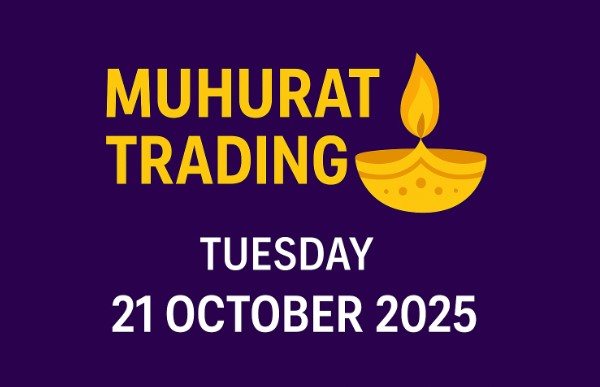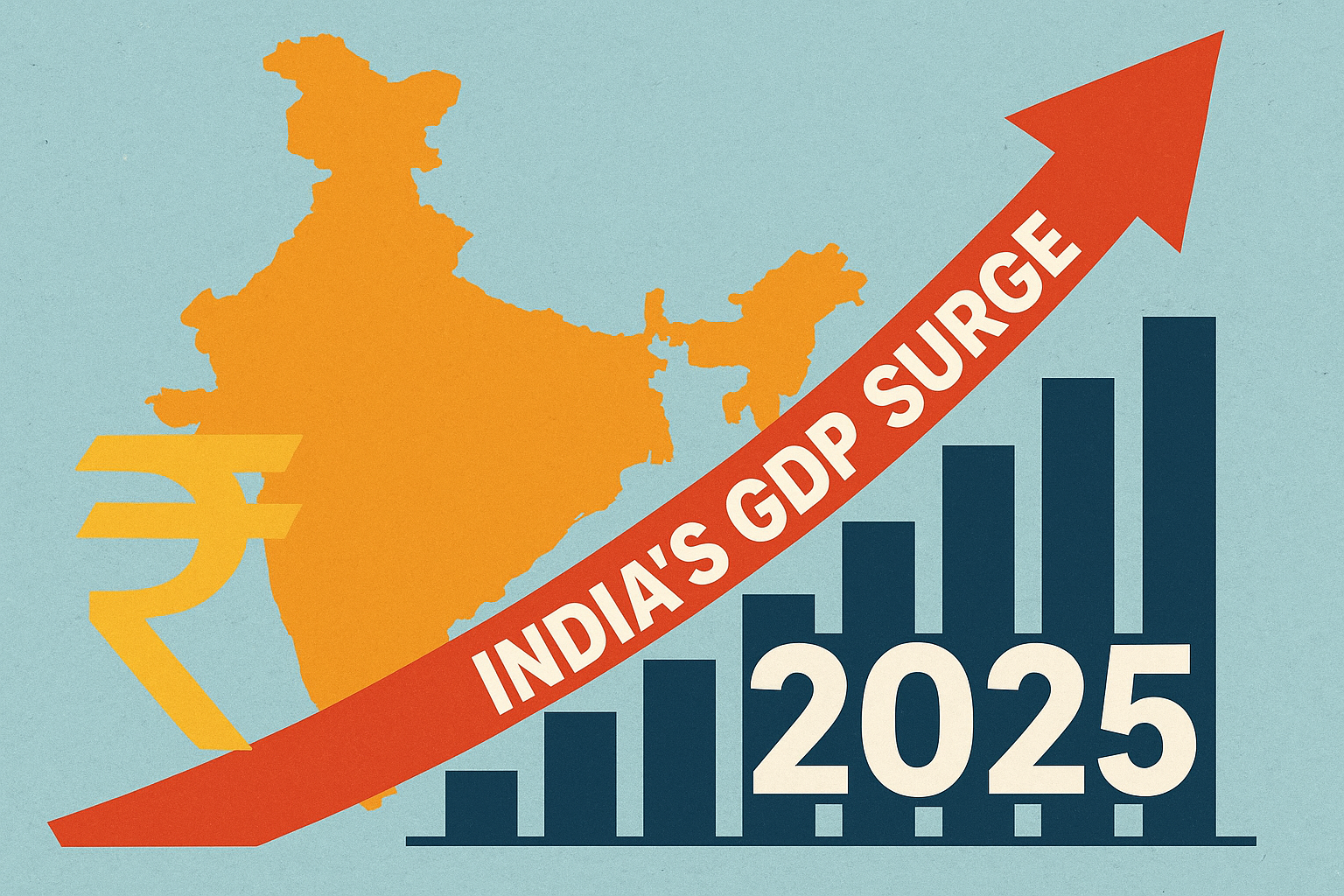If you’ve been trading or investing for even a short while, you already know the stock market doesn’t operate 365 days a year. Just like us, it takes breaks—holidays, festivals, and maintenance days when the trading floors pause.
An active trader knows stock market holidays are not just a break—they can actually affect your trades.
Keeping track of the NSE holiday schedule isn’t about planning a getaway; it’s about staying one step ahead. Just before a holiday, the market can be a little quiet and erratic. It can take some time for things to feel normal again after everyone resumes trading after the break, and prices can move in odd ways.
Holidays also bring a bit of tradition into the trading world. Take Muhurat Trading during Diwali, for example. The market opens for a short evening session, but it’s more than just buying and selling—it’s symbolic, a way for investors to start the financial year on an auspicious note. In this guide, we’ll walk you through the upcoming NSE holidays for 2025, including those that fall on weekends, dive into Muhurat Trading, and share expert insights on what might be in store for the market in 2026.
By the time you finish reading, you’ll have a clear picture of the calendar, understand how to plan your trades, and get a sense of the market’s potential moves in the year ahead.
Why Holiday Calendars Matter for Investors
It might sound simple, but think about this: one missed settlement day can affect your cash flow, your intraday plans, or even your long-term entries. If you’re an intraday trader, knowing the exact schedule is almost as important as following your charts. For long-term investors, it’s a handy way to know when to tweak your portfolio or pause before making a move. Really, this holiday calendar isn’t just about days off—it’s about keeping in step with how the market moves.
Upcoming NSE holidays in 2025
Here’s the official holiday list (from August onwards). Mark your calendars — you don’t want to be placing trades on these days:
| Date | Day | Holiday |
| 02-Oct-2025 | Thursday | Mahatma Gandhi Jayanti |
| 21-Oct-2025 | Tuesday | Diwali Laxmi Pujan (Muhurat Trading in evening) |
| 22-Oct-2025 | Wednesday | Diwali Balipratipada |
| 05-Nov-2025 | Wednesday | Guru Nanak Jayanti |
| 25-Dec-2025 | Thursday | Christmas |
From now until the end of the year, these are the trading holidays. Regular trading will resume on the following working day.
Muhurat Trading 2025: A Tradition Worth Spotlighting
The calendar becomes festive at this point: On Tuesday, October 21, 2025 (Diwali Laxmi Pujan), Muhurat Trading takes place. The exchange opens for roughly one hour—often around 6:15 pm to 7:15 pm (exact time TBD).

This isn’t about capital gains (though sometimes there’s a small spike). For many investors, it’s about symbolism—placing that first share with family, celebrating good fortune. Market volumes stay modest, sentiment stays high, and even seasoned traders lean in for the experience. Trust me—it’s a ritual every investor should taste at least once.
What Experts Are Saying About the 2026 Horizon
Now, the part everyone loves—what comes next? Here’s a sampling of what analysts and brokerage voices are saying:
“Remain true to your risk appetite—high-growth stocks will reward risk-takers,” said Sandipan Roy, CIO of Motilal Oswal Private Wealth, in an interview with ET Wealth. He believes that the banking and automotive industries will drive earnings stability and growth.
HDFC Securities’ MD & CEO, Dhiraj Relli, told Mint that India’s market may outperform global peers in the coming year. He points to attractive valuations, sectoral rebounds, and strong domestic fundamentals.
Bernstein predicts that the top 100 NSE stocks will see a 15% increase in earnings in fiscal 2026, according to Reuters. Better liquidity, a potential rate cut, and stable commodity prices underpin that.
Motilal Oswal also trimmed Nifty EPS projections for FY26–27, but reversed stance slightly—turning bullish on Indian midcaps, based on their consistent earnings outperformance.
And from Economic Times, HDFC Securities’ Relli added more context, noting “Nifty earnings could grow 12–15% over the next two fiscals… risk-reward is favorable for sectors like banking, oil & gas, and real estate.”
Even more bullish note, Raamdeo Agrawal, chairman of Motilal Oswal, said India’s stock market—currently at ~₹414 lakh crore—could double in the next four years, especially with value still waiting in the unlisted space.
Sectors to watch – Analysts believe infrastructure, manufacturing, and banking could continue to lead. IT, which faced headwinds in 2024–25, may see recovery as global demand picks up.

Volatility will remain part of the game – Global elections, crude oil prices, and interest rate shifts in the US will continue to influence Indian markets. Although the trend may continue to rise, experts caution that 2026 won’t be a “straight-line rally.”
Retail participation is key – Demat account openings are at record highs. Brokerages point out that with more retail investors joining the market, it could stay steady even if foreign investment flows become unpredictable.
Looking at 2026, things seem pretty promising. The best approach for investors is to stay calm and not react to every sudden market swing. Keep following your plan, stay disciplined, and you’ll have a much better chance of success over time.
Key Points to Remember
Make a note in your calendar—the market will take breaks from early October through Christmas, with Diwali and the special Muhurat Trading session stealing the spotlight.
Plan smart around these holidays—they’re not just dates; they affect your rhythm.
Look ahead with cautious optimism—experts see earnings recovery, midcap strength, and sectoral rotations playing out in 2026.
Stay grounded—
2025 ends with tradition.
2026 begins with opportunity—tempered by global twists.
Because at the heart of this market story? It always comes back to people: their patience, their planning… and yes, their faith in the days ahead.
DISCLAIMER: The information given in this blog is for educational purposes only. Any content of this blog is not investment advice.
- Make in India 2.0: How Manufacturing Is Reshaping Market Sentiment - December 13, 2025
- Real Estate Boom : Why Tier-2 Cities Are Attracting Big Investors - December 12, 2025
- India’s GDP Surge 2025: What the New Growth Numbers Mean for Markets - December 9, 2025





